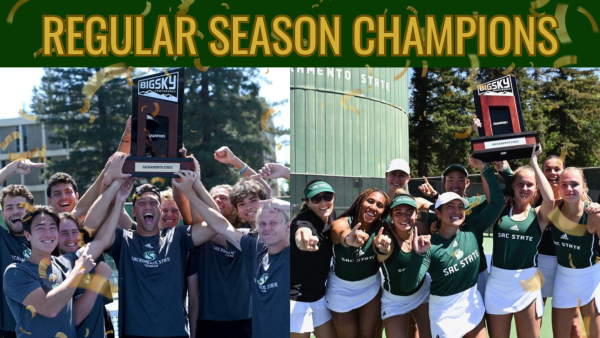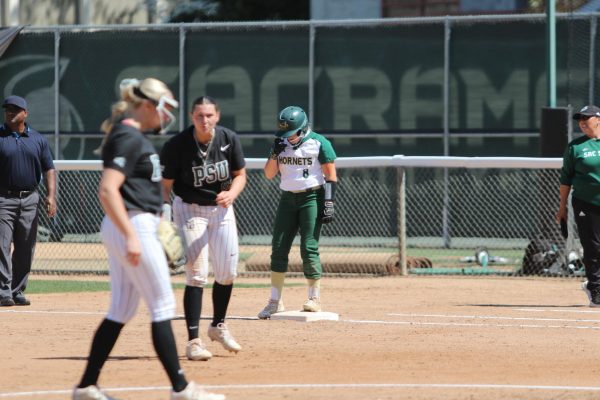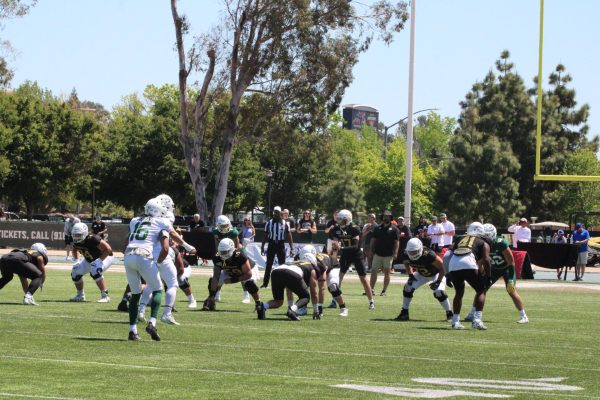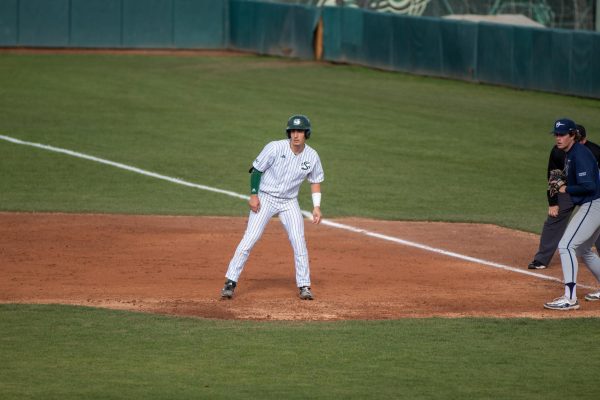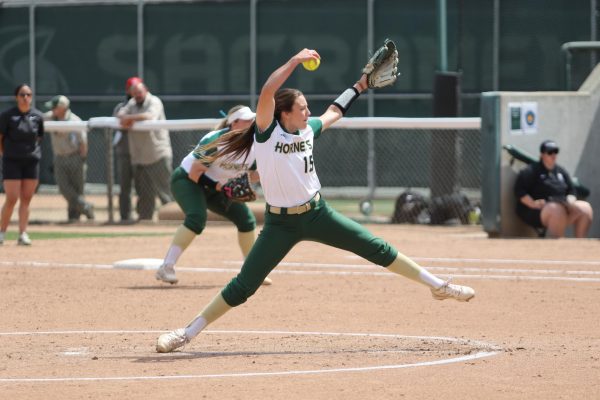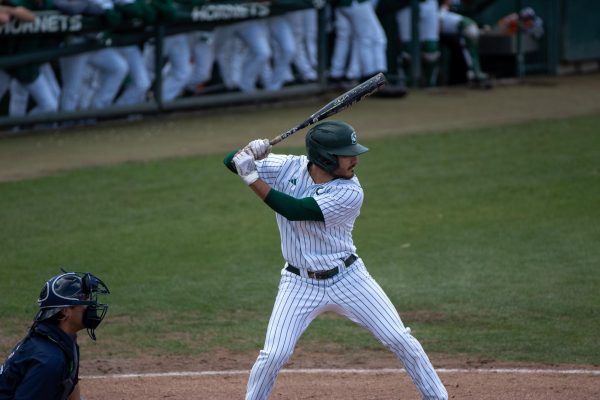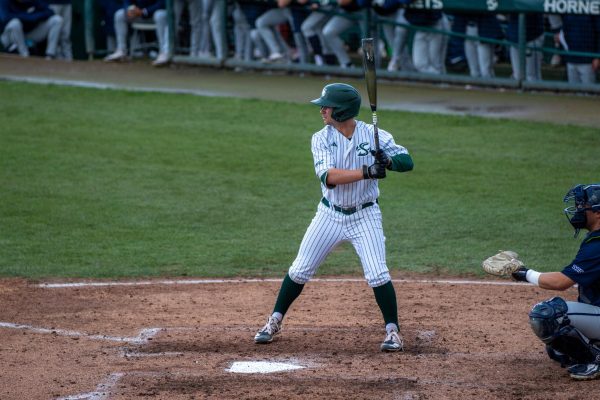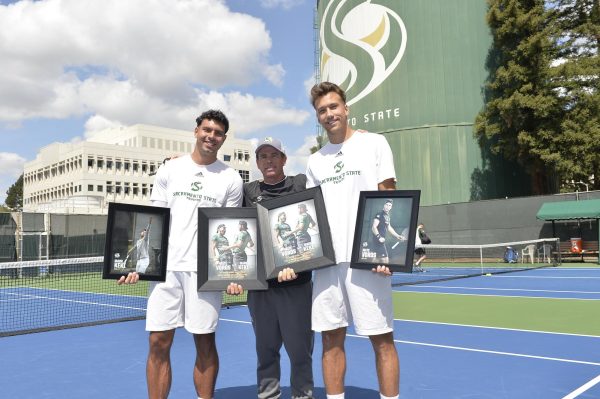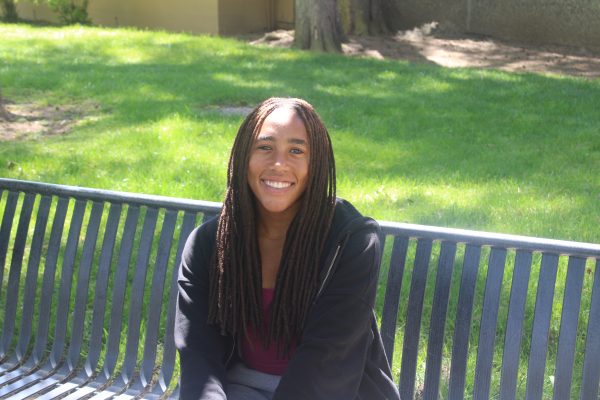Sac State inducts a living legend in Hall
January 30, 2013
When former Sacramento State baseball coach John Smith created baseball’s hall of fame in 1986, he did it for one purpose.
“I wanted to honor some of the great careers a lot of our baseball players have had,” Smith said. “This is a way to pay them back.”
Now, after 26 years, it is his turn to be paid back.
During Sac State’s Diamond Dinner to kick off the 2013 baseball season, Smith became the most recent inductee into the school’s baseball hall of fame, in honor of his 32 years of coaching.
“I had no idea that I would ever be inducted into such a prestigious organization with men who put so much into this program,” Smith said.
During his tenure, Smith captured two North Coast Athletic Conference championships, appeared in two NCAA Division II College World Series and has 879 wins, giving him the most wins in Sacramento State history.
As much as he enjoyed success on the field, seeing his players succeed, not only on the baseball field but also in life, meant that much more.
“The one thing I told all my players was that there is life after baseball and you had better be prepared for it,” Smith said. “If you go through life just playing baseball, you are going to be a guy that doesn’t have anything. Baseball will come to an end at one point in time.”
Senior pitcher Brandon Creel was recruited by Smith in 2009.
“He made me grow up a little bit,” Creel said. “As a freshman, I was immature and Coach Smith didn’t take anything from anyone. He was big on school. If you didn’t go to class, you would run five miles.”
When Smith was younger, he played both football and baseball growing up and although he said he was a better football player, it was baseball that captured his heart.
“I like the way the game is played,” Smith said. “There are so many little things that can happen during a game to make the game so interesting that the general fan doesn’t see. Everything has to go right. In basketball and football you can make a few mistakes here and there and cover it up with a big play down the road, but in baseball, the little things come back to haunt you. You have to play your best every day.”
Shortly after he started college, Smith was drafted into the Army. When he returned three years later, he knew he wanted to get a college degree, but never imagined the idea of being a coach.
“Growing up, I never aspired to be a coach,” Smith said. “All I wanted to do was play professional baseball, but I knew that was not going to happen.”
Smith got his first coaching job as an assistant at the College of Siskiyous and met then head coach Cal Boyes when his team traveled down to play Sacramento State’s junior varsity team.
Three years later, Smith was offered the job as the university’s eighth head baseball coach.
Throughout Smith’s 32-year tenure, he coached a multitude of players. Some of them continued on to play professionally, such as center fielder Tim Wheeler, who was drafted in the first round in 2009 and plays for the Colorado Rockies Triple-A team, Colorado Springs.
According to the NCAA, the chance of becoming a major league baseball player is roughly 11 percent, but Smith never tried to talk his players out of their dreams.
“I tried to encourage them to get going, because baseball players don’t have a lot of time,” Smith said. “But I always made sure if they signed as a junior that they came back to finish their degree in the offseason. A number of them have done that and I am very proud of that.”
Bob O’Neill never played professional baseball, but played center field for Smith from 1984-85. He said he will never forget his time playing as a Hornet.
“John had that natural leadership capability that pointed us in the right direction,” O’Neill said. “I’ve played baseball my entire life and the time I played for John, he had a knack for making a group of guys into a team.”
Throughout his three decades as coach and mentor, Smith has seen baseball change in Sacramento.
He saw the transition from wood bats to aluminum bats, style of play change from speed to power and back to speed and even took Sacramento State’s first athletic program from the Division II level to Division I in 1991, where it was not invited into a conference until two seasons later.
“It was hard because we were the independent stepchild of college baseball,” Smith said. “It was frustrating because everyone used that against us in the recruiting process. You don’t have anybody fighting for you.”
Smith decided to announce his retirement from coaching, making 2010 his last season. Although the team finished 18-35-1, Smith said he never wants to forget his time in the Sacramento State dugout.
“I think what made my decision was that the recruiting process got to be such a grind,” Smith said. “It’s great when you are younger, but when you get to be in your 60s, you get tired. I just realized I need to slow down, because the one thing I didn’t want to do was die on the baseball field.”
Although Smith is no longer coach, he is not too far from the baseball field, dealing with facility enhancement as a special assistant to the athletic director.
“Because of his experience as a baseball coach and the facility development that he did while coaching, he became a natural to (serve in that area),” said Sac State athletic director Terry Wanless. “It has been a tremendous help for me personally.”
Now, when Smith walks by the plaque for his baseball hall of fame, it will finally say “John Smith.”
“It made me appreciate the opportunity I received,” Smith said. “It was an incredible experience.”
Ryan Kuhn can be reached on Twitter at @rskuhn

































































































































